Course change for Figaro Stage 2
Published on September 5th, 2020
The second stage of the 51st La Solitaire du Figaro will take the 35 strong fleet of solo racers to the most easterly finishing port ever. Starting from the Baie de Saint Brieuc on September 6 at 1100hrs local time, the 404 nautical miles leg crosses some of the busiest shipping lanes in the world to finish off Dunkirk where the leaders might be expected to arrive late on September 8.
Because of the forecast light winds for the first period of the race, the course has been shortened from 497 nm with the northernmost turning mark now Eddystone off Plymouth and not Wolf Rock off Lands End as programmed.
“It will be the first time I have sailed into the North Sea,” chuckled the very composed and discreet race leader Xavier Macaire, 39 year old skipper of Groupe SNEF who starts the leg with a margin of just one minute and 35 seconds over the Bretagne CMB Performance team’s fast rising star Loïs Berrehar who is ten years his junior.
The North Sea may be new territory for Macaire – in theory the North Sea starts east of the Dover Straits – but so also is wearing the ‘yellow jersey’ leading the famous annual La Solitaire du Figaro. But the French Solo Offshore Champion of 2015 has been dealing well with the added pressure of being leader.
A former marine carpenter and composites specialist who served his time in the production and custom yards on the French Mediterranean coast, he has parlayed his success in the Mini 650 Class where he sailed 12 races in a production Pogo and won six events and took two second places before moving into the Figaro.
He would be forgiven for thinking he is due the overall title as twice in consecutive years, 2015 and 2016, Macaire was denied leg victories which might have seen him win outright.
In 2015, he sailed into a restricted area 18 miles from the finish and was given a one hour penalty which dropped him to third overall behind Yann Eliès. In 2016, he dropped to third on stage 3 into La Rochelle because of an eight minutes penalty for a broken seal on the support for his fire extinguisher.
“As always, there is a lot of pressure,” admits Macaire. “To be honest it feels like normal pressure at this stage – just the pressure of competition, to the desire to do well because of course this is the most important race of the year. I would be lying if I said I have no pressure.
“But it is not in any way linked to my victory on the first stage, it is all about my desire to continue to sail well, to not make mistakes on the next stage. And that starts with concentrating on preparation, you have to be organized and methodical, take things one by one so that you can start with no additional worries only focused on the stage.”
“The original course would have been four days but with a big stage starting again on the September 12, and that I absolutely wanted to respect the three days for recovery, we shifted the course to the This still allows us to respect the philosophy of the stage,” explains race director Francis Le Goff.
Compared with the 642 miles first stage to Fastnet and back, this second stage in the Channel should be more straightforward and there should not be too many chances for big gaps to open – or, conversely close, for those pre-race favourites who have found themselves down the leaderboard after stage 1.
That said the top ten are within 22 minutes of Macaire, Briton Sam Goodchild (Leyton) in ninth and Ireland’s Tom Dolan (Smurfit Kappa) in 10th, both elevated a couple of places by jury decisions against two French sailors who missed a mark on the final miles of Stage 1.
“On paper, this is not a stage where there should be huge gaps,” confirms Adrien Hardy (Ocean Attitude).
Adds Frédéric Duthil (Technical Veil-Cabinet Bourhis Generali), “We have a big upwind leg to go up to the English coast and then we go downwind with still a little wind so there don’t seem to be any big traps on the course. It’s going to be more of a speed race and we will certainly see the leaders of the series who have a good basic speed at the forefront.”
While Goodchild and Dolan would be happy with a similar, steady consistent second leg, Britain’s Alan Roberts (Seacat Services) is 56 minutes behind Macaire and 34 minutes outside the top ten. He was unlucky to become stuck in a wind hole on the first night, along with several other top seeds like himself.
“I am full re-charged and full of energy for this next leg,” Roberts explained. “I was unlucky with that one hole but otherwise I was reasonably happy with the way I sailed. That is the way it happens sometimes on La Solitaire. But my philosophy stays the same. I won’t be risking more at this stage. If it was four or five hours behind that would be different but I just want to go out and stay in contact with the lead group and not do anything extreme.”
Stage 1 winner Xavier Macaire shares his view of Stage 2:
“The Azores high pressure extends to the English Channel and Brittany and we are in the high pressure curve so we will have a west-northwest wind. When we go up northwards towards England, we will be wedged between this high pressure which moves to the east and a low pressure to the north of Great Britain with a good flow from West-North-West.
“Then we will have a fairly strong West-South-West flow between England and Dunkirk, so we will do a good part of the stage downwind. It will be fun, there will be some fast stuff! If the wind is strong we will be more towards survival mode, if it is moderate, it will mainly be driving and positioning.
“The finish into Dunkirk is likely to be shaped to some extent by the TSS at Calais which takes a lot of ocean. What is certain is that the TSS funnels our sailing area, we will be between it and the coast, which is also quite high there but normally should be downwind so we should not have to tack along the coast against the current in a tight small-gain mode.
“We will have to focus on the positioning and speed of the boat in this last phase of the stage. In any case, I am going to sail in the North Sea for the first time, it will be great to discover a new sailing area.”
Race details – Standings – Tracker – Facebook
The four-leg solo 1830 nm race in the latest generation foil-equipped one design Figaro Bénéteau 3 is a fiercely competitive proving ground for solo sailors. Analysis of the race course by the Race Director:
Leg 1: a 642 mile voyage to the Fastnet and back (August 30 to September 2)

“The only waypoint in this first long leg will be the Fastnet Rock, which they will have to leave to starboard. It is going to be very open for the solo sailors from the start, with everyone attempting to find the right tactics and avoid the traps in the Channel and Celtic Sea,” explained Francis Le Goff. Once they have left Saint-Brieuc Bay, the skippers will head for Ireland while avoiding the rocks around the Isles of Scilly and respecting the various shipping lanes (TSS) to the West of Cornwall on the way out and back. Anything is possible. They can go inside or outside the islands, so we can look forward to an exciting tactical game…
Leg 2: 404 miles to Dunkirk via the English coast (September 6 to 8)
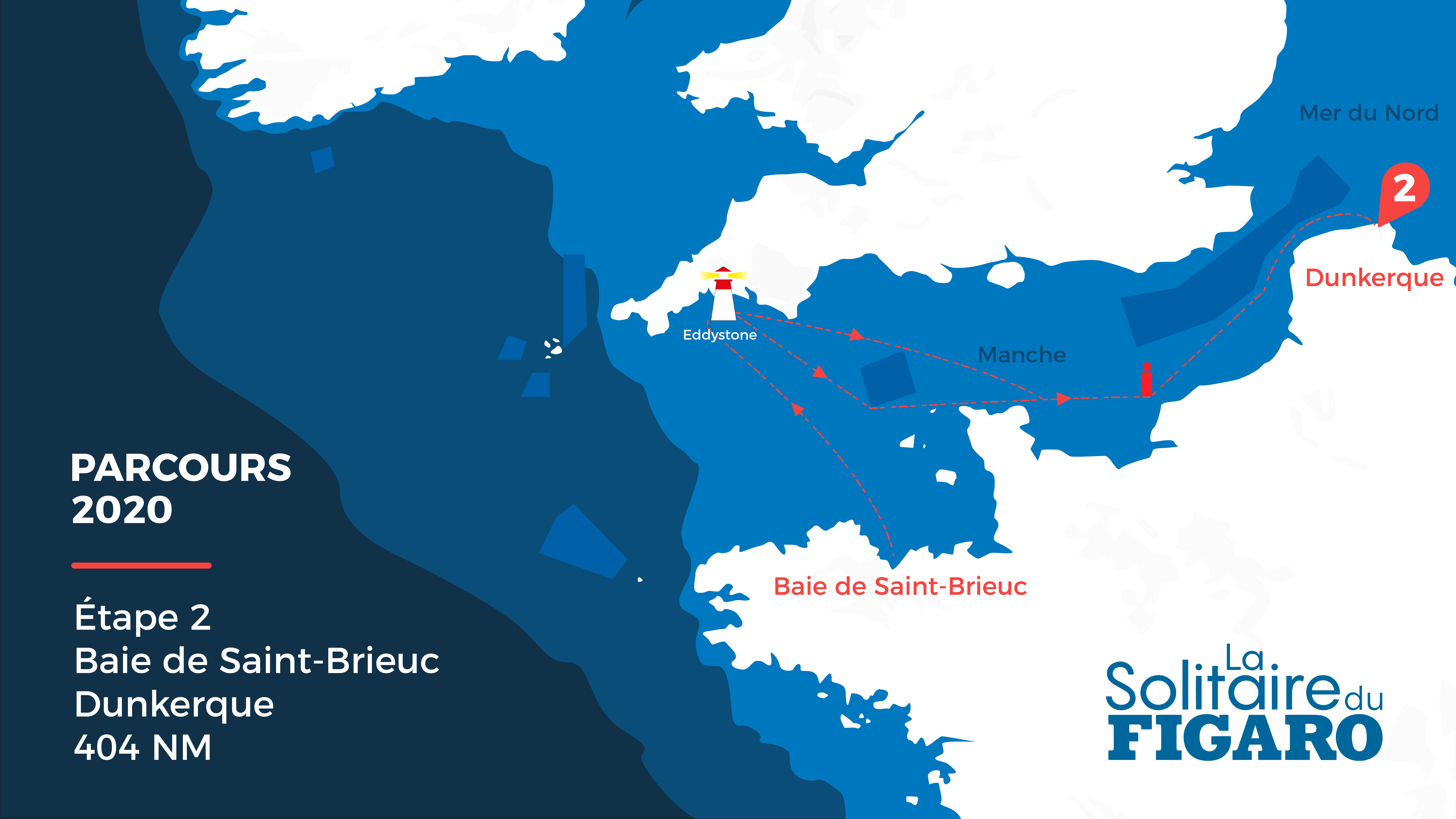
Originally to be 497 miles to Dunkirk via the English coast, a light wind forecast shortened the northernmost turning mark to Eddystone off Plymouth and not Wolf Rock off Lands End as programmed. From the start, it will be a 120 nautical miles leg to Eddystone lighthouse followed by a long, fast 160 miles downwind run east up the channel to a mark, Antifer, off Le Havre then continuing 100 miles more on a downwind procession to Dunkirk, the fleet increasingly funneled into a narrow lane, gybing several times down a course bounded by high land to the south and the forbidden shipping lane to their left. The leaders are expected in Dunkirk after about two and a half days at sea.
Leg 3: a 504 mile coastal leg from Dunkirk to Saint-Nazaire (September 12 to 15)

There are going to be some great sights along the way in this third leg with a wide range of backdrops. The Opal, Alabaster, Mother-of-pearl coasts of Normandy and the Pink Granite coast and craggy cliffs at the tip of Brittany, the Megalithic Coast of Southern Brittany, the Love Coast and Jade Coast of the Loire Estauary area. So many brilliant things to see, yet the leg is full of hurdles: tricky headlands and capes, tidal currents, islands and rocks, fishermen… 500 miles of high-tension sailing, with one eye on the charts, and the other on the sails with some sleepless nights ahead.
Leg 4: a 24 hour and 183 mile sprint between the islands for the Grand Finale (September 19 to 20)

After three hard, testing stages, the solo sailors will have to draw deeply on their reserves for for 24 hours of racing, a loop which should take them between the Ile d’Yeu and Belle-Île via the Ile de Groix before seeing them return to the Loire-Atlantique to crown the big winner of this 51st edition which promises to be full of twists and turns.
Source: La Solitaire du Figaro


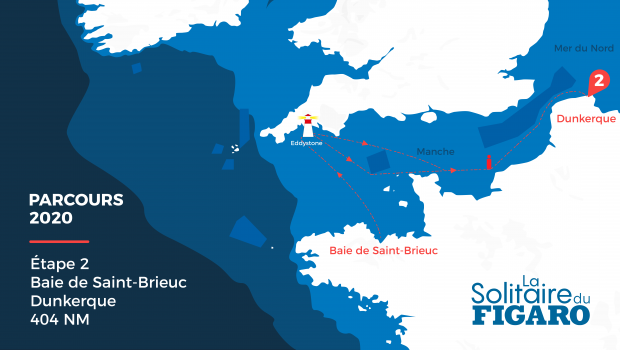


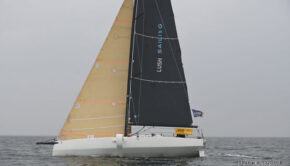
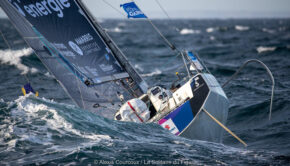
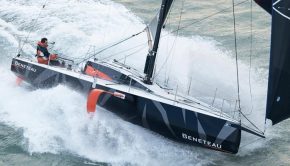
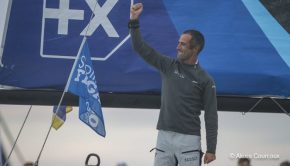
 We’ll keep your information safe.
We’ll keep your information safe.